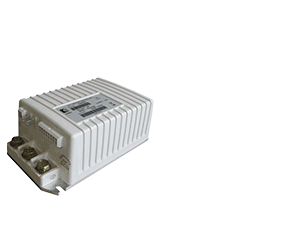Although battery powered golf cars are economical, efficient, and provide transportation with a low carbon footprint, it’s easy to forget the cost of owning one or more of these vehicles when it comes time to replace the deep-cycle batteries. Depending on the make and model, golf cars can require 4, 6 or 8 deep cycle batteries which is a major expense when a new set is needed.
The overall service life of golf car batteries is dependent upon how many times they are discharged and recharged, how deeply they are discharged on average, and how completely they are recharged on each discharge-recharge cycle. While we hear of some golf car owners getting six to seven years out of their batteries, most are frequently looking for the next great deal for purchasing new ones. Even though some of the stories about long battery life may be exaggerated a bit, the facts are that with wise battery selection you can get both a great value at the time of purchase, and long battery life. The key is understanding the differences in battery performance and design versus your application’s requirements.
It is important to understand that deep-cycle batteries are available in standard 6, 8 and 12 volt sizes, and with different capacity ranges. These capacity ranges make it possible to select a battery with the size and capacity needed for your application at a price that suits your budget. Lower capacity batteries are typically priced more economically than higher capacity batteries that provide premium performance at a premium price. Most golf car owners know the correct size and voltage of the batteries they need for their specific vehicle, but may not understand the correlation of battery capacity to runtime, and overall battery life. Since deep cycle battery life is directly related to average depth of discharge, selecting a battery with the optimum capacity for the application will maximize battery life while minimizing the upfront cost.
Purchasing a battery with too little capacity will shorten overall battery life, while purchasing a battery with too much capacity will add to the purchase cost without necessarily adding battery life. For example, if your use pattern is to play 18 holes once or twice a week when the weather is good, then a more economical battery may be your best choice. If you live in a golf course community, however, your use patterns are greater. You may regularly use your golf car to drive to the course, play 18 holes, drive to lunch, play another 18 holes and then drive home. If this is the case, a premium capacity battery will be your best choice (indeed your only choice).
This may sound simple enough, but here’s where it can get tricky. When comparing batteries from different manufacturers, it’s important to carefully check the published information to be sure you’re comparing apples-to-apples. Deep-cycle battery cycle-life ratings are not always compared using the same basis by different manufacturers. Typically, cycle-life comparisons are based on the depth of discharge (%DOD). This is calculated by dividing the amp-hours discharged from the battery after each discharge, by the rated capacity of the battery. Not all manufacturers use the same rated capacity numbers for this comparison. It is important to note what the rated capacity is used for this calculation in order to properly compare batteries.
As standard practice, most battery manufacturers use the rated capacity at the 20-hour rate for this comparison. For example, if a battery is discharged to 80% DOD based on the 20 hour rating it is considered a deep discharge and if done consistently, the battery would be expected to deliver ~675 cycles. Most battery manufacturers recommend limiting the average discharge to ~50% DOD for optimum cycle-life vs runtime. At ~50% DOD, the same battery would be expected to deliver ~1150 cycles (indicating a 70% increase in cycle-life). If a different rating is used as the basis for the cycle-life comparison, the result could be much different. Therefore when comparing cycle-life ratings, make sure the comparison uses the same rating basis. This will make sure you have an apples-to-apples comparison.
To put this into perspective, price should not be the only consideration when deciding on a set of replacement batteries. When comparing battery brands and capacity ratings, be sure to consider the requirements of your application, and how they will affect the expected performance and life of the batteries you choose. Then, make sure the information provided by the battery manufacturer addresses the needs of your application. To that, add a strict maintenance regimen that includes checking water levels, and adding distilled water as necessary. Also perform a monthly equalization charge, regularly check cables and terminals, and make sure you don’t allow the batteries to discharge too deeply by utilizing opportunity charging. By doing all of this, you’ll get the most out of your smart battery purchase. For more information on selecting the best batteries for your golf car, as well as maintenance tips that can help make your batteries last longer, visit www.usbattery.com.




















